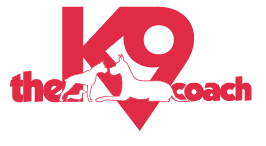How to Stop Puppy Chewing
Puppies lose their baby teeth at about 4 months of age. Puppy Chewing feels good during this teething phase. Using their mouth is also how they investigate new objects. It also happens when they are bored.
So keep your puppy well-supervised and well-exercised daily.
But when you find that they are about to start chewing the dining room table you have a little work to do.
Give a big disruptive verbal “aak, aak” or “no” — not screaming at your puppy. Just louder than normal and sharp. Then redirect your puppy to a more appropriate chew toy.
Supervise: Keep your eyes on him — he will go back when he thinks you aren’t looking. So if you’re going to take a nap or shower be sure he goes in the crate with a toy.
Tether the dog to you: It’s ok for you to have a dog on a leash inside the house. It will help you during training to prevent the dog from running off to do something else and gives you a way to “catch him” if he’s into mischief. Your dog can’t chase the cat or eat the kid’s snack if you’re supervising.
We do not recommend the use of raw hides. Rawhides are not digestible products. The pieces must pass through the body, and sometimes they do not. They can be dangerous given that they swell when wet, and can be ingested in large segments by your dog causing choking or blockages. Nylabone® or Kong® make great products for dogs of all ages and chewing intensities.
You can use products like Bitter Apple® to help deter your dog from chewing your furniture. One trick – spray the first spritz directly into your dog’s mouth to create a very intense association with the smell, then spray the corner of your couch.
By the way — if your shoes are in the middle of the floor — consider them fair game for now. They are enjoyable to chew, smell like you, etc. Put your stuff away — out of reach of curious pups. Puppy-proof things like the remote control to your tv, your phone charger, and electrical cords. Make sure they cannot be pulled into the dog’s crate either — trust me he will find a way. You can only teach prevention through supervision. Many of them simply need to be put out of reach.
But you’ll want to start working on the leave-it command.
Dogs ingest all sorts of things if given the opportunity. Acorns, socks, toys, even poisons, etc. These can be dangerous and expensive. Supervise for prevention, but keep things cleaned up and out of reach too.
Tether the dog to you: It’s ok for you to have a dog on a leash inside the house. It will help you during training to prevent the dog from running off to do something else and gives you a way to “catch him” if he’s into mischief. Your dog can’t chase the cat or eat the kid’s snack if you’re supervising.
